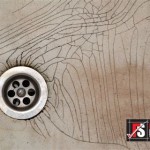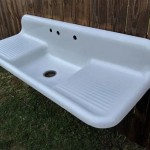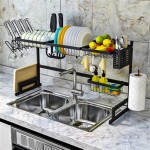Musty Smell Under Bathroom Sink: No Leak Detected
A musty odor emanating from beneath a bathroom sink, even in the absence of visible water leaks, presents a common domestic issue. This type of smell, often described as damp, moldy, or earthy, can indicate a range of underlying problems that require systematic investigation to resolve. Ignoring such a smell can lead to further complications, including the proliferation of mold and potentially structural damage.
The absence of a readily apparent leak does not exclude moisture as the root cause. Hidden leaks, condensation, and improper ventilation can all contribute to the development of a damp environment conducive to mold and mildew growth. Furthermore, materials commonly found under bathroom sinks, such as wood, cardboard, and even certain types of plastic, can retain moisture and become sources of the unpleasant odor.
Investigating Potential Sources of Moisture
The first step in addressing a musty smell is a thorough inspection of the area under the sink. While no active leak is visible, evidence of past leaks or persistent dampness should be sought. This involves a visual examination of all plumbing connections, including supply lines, drain pipes, and the P-trap. Look for signs of corrosion, discoloration, or mineral deposits, which can indicate prior leakage.
Pay close attention to the area where the pipes enter the wall or floor. Caulk or sealant deteriorates over time, creating gaps that allow moisture to penetrate. Similarly, inspect the sink basin itself for cracks or chips that could be allowing water to seep through. A flashlight can be useful for illuminating dark corners and hard-to-reach areas. A magnifying glass may aid in identifying hairline cracks or minute amounts of mold growth.
Beyond direct plumbing, consider the possibility of condensation. In humid climates or during periods of rapid temperature change, condensation can form on cold pipes, particularly metal ones. Over time, this moisture can accumulate and foster mold growth. Insulating exposed pipes can help to prevent condensation. A dehumidifier placed in the bathroom can also mitigate the overall humidity level.
The materials stored under the sink should also be evaluated. Cardboard boxes, paper towels, and other absorbent materials can readily absorb moisture and become breeding grounds for mold. Replace these items with plastic containers or other water-resistant alternatives. Regularly inspect these storage items for signs of dampness or mold growth.
Identifying and Addressing Mold and Mildew
Once potential sources of moisture have been identified, the next step is to determine if mold or mildew is present. Mold and mildew are types of fungi that thrive in damp environments and produce a distinctive musty odor. Visual inspection is often sufficient to detect mold, which can appear as black, green, brown, or white patches on surfaces. However, mold can also grow in hidden areas, such as behind walls or under flooring.
If the presence of mold is suspected but not readily visible, a mold test kit can be used. These kits typically involve collecting a sample of dust or surface mold and sending it to a laboratory for analysis. The results of the test can confirm the presence of mold and identify the specific type of mold present. This information can be helpful in determining the appropriate remediation strategy.
Small areas of mold can often be cleaned with a solution of bleach and water (1 part bleach to 10 parts water). However, it is crucial to wear appropriate personal protective equipment, including gloves, a face mask, and eye protection, when working with bleach. The area should be well-ventilated to prevent the inhalation of fumes. Scrub the affected surfaces thoroughly and allow them to dry completely.
For larger mold infestations or mold growth in hidden areas, professional mold remediation services may be required. Mold remediation professionals have the expertise and equipment to safely and effectively remove mold and prevent its recurrence. They can also identify and address underlying moisture problems that are contributing to mold growth.
It's crucial to note that simply killing the mold is not enough. Dead mold can still trigger allergic reactions and respiratory problems. The mold must be physically removed to eliminate the source of the odor and prevent health issues. Professional mold remediation services often involve containment measures to prevent the spread of mold spores during the removal process.
Evaluating Ventilation and Airflow
Adequate ventilation is essential for preventing the buildup of moisture in bathrooms. Bathrooms are inherently humid environments due to showering, bathing, and other water-related activities. Proper ventilation helps to remove excess moisture from the air, reducing the risk of mold and mildew growth.
The primary source of ventilation in most bathrooms is the exhaust fan. Ensure that the exhaust fan is functioning properly and is of adequate size for the size of the bathroom. A general rule of thumb is that the exhaust fan should be able to completely exchange the air in the bathroom at least eight times per hour. This can be calculated by dividing the bathroom's volume (length x width x height) by 7.5 to determine the required CFM (cubic feet per minute) rating of the fan.
The exhaust fan should be used during and after showering or bathing to remove excess moisture. It is also beneficial to leave the bathroom door open after showering to allow for further ventilation. Regularly clean the exhaust fan to remove dust and debris, which can reduce its efficiency. A dirty exhaust fan can’t effectively remove moisture from the air.
In addition to the exhaust fan, consider the natural ventilation in the bathroom. If the bathroom has a window, open it periodically to allow fresh air to circulate. However, be mindful of the outdoor humidity level, as opening the window on a humid day can actually increase the moisture level in the bathroom. Ensuring proper airflow throughout the bathroom helps to prevent stagnant air and the build up of moisture that leads to a musty smell under the sink.
Check the air vents leading to the bathroom. Blocked or restricted vents can limit airflow and contribute to moisture buildup. Regularly clean or replace air filters to ensure proper airflow. Consider installing a dehumidifier in the bathroom to further reduce the humidity level, especially in humid climates.
Furthermore, consider the overall ventilation of the house. Poor ventilation throughout the entire house can contribute to moisture problems in specific areas, such as the bathroom. Ensure that the attic and crawl space are properly ventilated to prevent moisture buildup. Addressing ventilation issues throughout the house can help to reduce the overall humidity level and prevent mold growth in the bathroom and other areas.
By thoroughly investigating potential sources of moisture, identifying and addressing any mold or mildew growth, and ensuring adequate ventilation, the source of the musty smell beneath the bathroom sink can be effectively addressed and eradicated, even in the absence of an obvious leak. Consistent monitoring and maintenance are essential for preventing the recurrence of the problem.

Why Is There A Smell Under My Sink

What To Do When The Bathroom Sink Smells Like Mildew Mold Smell

Is There A Musty Smell Under The Sink We Have Fix Upgradedhome Com

How To Clean A Stinky Sink Drain Home Repair Tutor

Help My Bathroom Smells Musty What Should I Do Phyxter Home Services

Help My Bathroom Smells Musty What Should I Do Phyxter Home Services

Why Your Bathroom Sink Drain Smells

What To Do When The Bathroom Sink Smells Like Mildew Mold Smell

How To Clean A Moldy Smell Under Kitchen Sink Ehow

Moldy Smelling Water From Bathroom Faucet Hometalk







